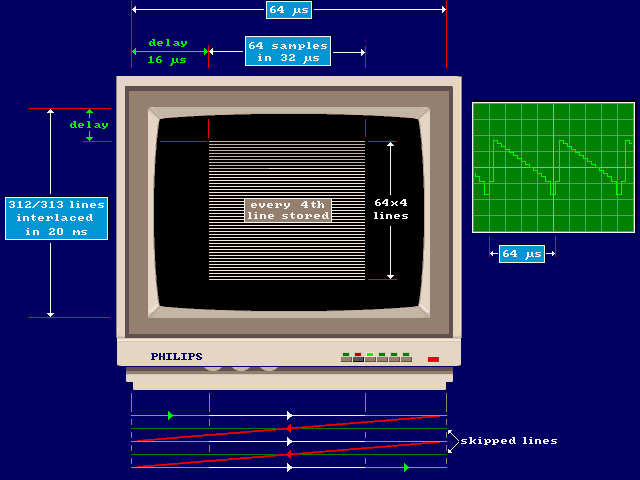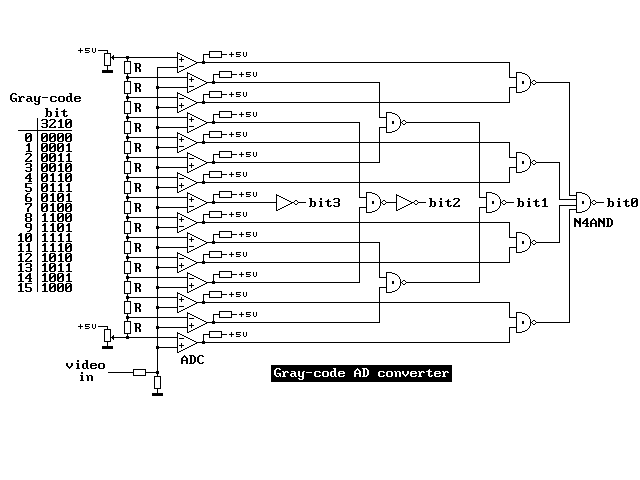
|

|
A commercial 2.7 W Philips vidicon observation camera was used for input. This standard 625-line PAL camera delivers 312- and 313-line interlaced images every 20ms, of which only 64 lines are used for later conversion, by neglecting three out of every four lines in a centered subset of 256 lines. To avoid spurious digital codes, the digitization hardware applies Gray code encoding in a 4-bit flash AD-converter, and it includes a sample-and-hold circuit for extremely rapid video signal transitions.
| Why The vOICe hardware uses Gray code | ||
|---|---|---|
|
With Gray code encoding, only one bit changes in subsequent binary codes.
Sampling during a noisy code transition will then have at most one bit
wrong, which implies a difference of only one quantization step. With regular
binary counting code, several bits may simultaneously change in subsequent
binary codes (e.g., all 4 bits change when going from 0111 to 1000), and
having some of them wrong during a transition can cause a big error amounting
to many quantization steps! In general, the Gray code for a decimal integer i may be written as Gray(i) = i ^ (i>>1), i.e., taking the exclusive-OR of i itself and i shifted one bit to the right. |
For the purpose of experimentation, as well as for technical reasons in prototyping the system, the observation monitor was made an integral part of the experimental setup. This has the advantage of providing visual feedback to the sighted experimenter or teacher on the field of view and on the quality of the camera image, concerning contrast and definition. For technical testing, this was essential. A disadvantage is, of course, that the present setup as a whole is not yet portable, although the special purpose computer for image-to-sound conversion is portable. Some further engineering will therefore be needed to arrive at a small set of battery-powered systems that can be carried around to evaluate to what extent people can learn to perceive, comprehend and make use of the soundscapes. The technical feasibility has now been established.

|